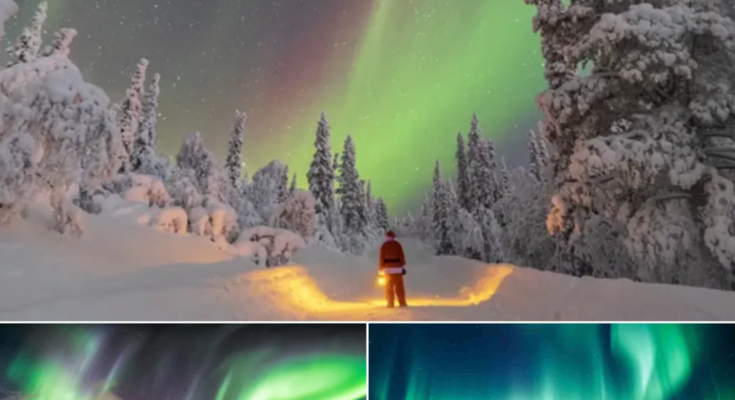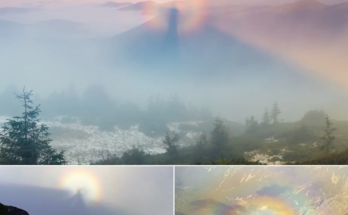This Christmas, the northern lights might just steal the show, adding a touch of magic to the festive season. The National Oceanic and Atmospheric Administration (NOAA) has issued a geomagnetic storm watch for December 25, hinting at the possibility of aurora borealis sightings across northern states like Michigan and Maine. This dazzling display of green and purple ribbons of light is caused by a coronal mass ejection (CME) from the sun.
Anticipated since its eruption on December 23 during a powerful M8.9 solar flare, the CME is on course to deliver a glancing blow to Earth’s magnetosphere, potentially igniting auroras visible from high latitudes. For aurora enthusiasts, this rare Christmas spectacle is a dream come true.
How Geomagnetic Storms Create Aurora Magic
When CMEs strike, they bring electrically charged particles called ions into collision with Earth’s magnetic field, resulting in geomagnetic storms. These storms generate the iconic northern and southern lights through a process where ions interact with atmospheric gases, releasing energy that manifests as light.

The intensity of these storms is measured using the NOAA G-scale, ranging from G1 (minor) to G5 (extreme). This Christmas storm is classified as G1, indicating that the conditions, while mild, are favorable for auroral activity. The colorful light shows are expected to stretch across regions with high latitudes, spreading celestial cheer for skywatchers.
When and Where to Watch
NOAA’s forecasts predict G1 storm conditions on December 25, but as with all space weather, timing remains unpredictable. To enhance your chances of catching the northern lights, tools like the “My Aurora Forecast & Alerts” app or “Space Weather Live” app can provide real-time updates based on your location.
Tamitha Skov, a space weather physicist, also offers insightful updates via social media, helping enthusiasts track these awe-inspiring events. However, much like Earth’s weather, space weather forecasts are not always precise, so patience is key.
Aurora Chasing Tips: Make the Most of the Moment
To optimize your chances of witnessing the auroras:
- Choose dark skies: Head away from city lights to minimize light pollution.
- Stay informed: Use apps or NOAA’s 3-day space weather forecast for real-time data.
- Watch the skies late at night: The best viewing times are typically between 10 PM and 2 AM local time.
- Dress warmly: Northern winters are chilly—don’t let the cold deter you from this spectacular experience.
A Rare and Unpredictable Show

Despite NOAA’s optimistic G1 storm prediction, auroras remain an elusive phenomenon. Space weather’s unpredictability means these events could range from a fleeting glimpse to a breathtaking spectacle—or nothing at all. But this uncertainty only adds to the excitement and allure of aurora chasing.
For those lucky enough to catch them, the northern lights will surely elevate this year’s Christmas celebrations to cosmic heights. Whether you’re in northern Michigan, Maine, or anywhere in the auroral belt, keep your eyes to the skies this holiday season.
A Magical Holiday Caption
“Witness the ultimate Christmas miracle: ribbons of light dancing across the sky. Will the northern lights shine down on you this holiday season?”
This potential celestial show is a reminder of the vast, uncharted beauty of our universe—a gift no amount of wrapping paper can replicate. Don’t miss your chance to marvel at this once-in-a-lifetime cosmic wonder!



